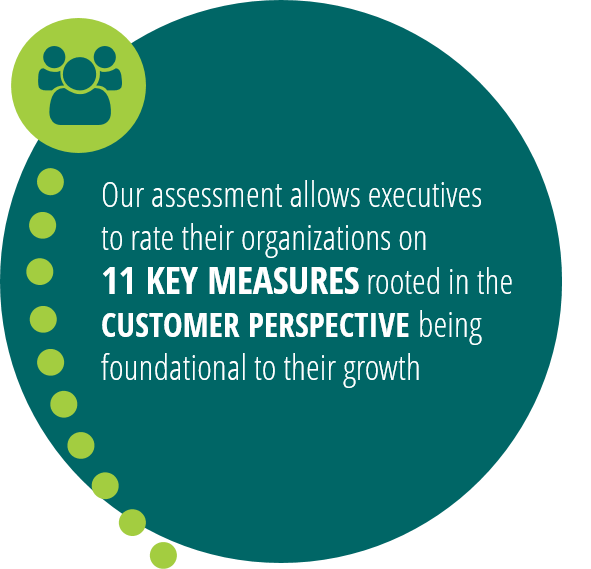Beliefs and Behaviors: Will the Real Barrier to Customer Centricity Please Stand Up?
By Camille Nicita, President & CEO, Gongos, Inc.
In 2017, Temkin’s State of Voice of the Customer Programs report cited that less than one-quarter of companies consider themselves good at making changes to their business based on customer insights. Inarguably, this sentiment is an extension of their findings two years earlier. That is, 67% of large companies rated themselves as good at soliciting customer feedback, yet only 26% think they are good at acting on it.
This is a common problem for many organizations. But if they recognize that this is the case, what’s holding them back?
I’ve pondered that question myself—and while the underlying explanation is complex, it seemed clear. For organizations to close the gap between understanding their customers and executing against that knowledge, customer centricity must be translated from an industry buzzword to a tangible strategy. Forward-leaning organizations acknowledge that articulating a customer-centric vision is merely the tip of the iceberg. They’re coming to grips with the reality that barriers to customer centricity have nothing to do with the customer at all.
Our Own Exploration
In late 2016, we set out to test our hypotheses—both with our Fortune 500 clients and other influential leaders across consumer insights, marketing, innovation and customer experience functions.
To bring about clarity through objectivity, we set out to develop a framework that could diagnose an organization’s state of customer centricity. It was essential that the framework be democratized across the entire organization to establish opportunities to create alignment, build consensus, and fuel momentum. But first, we needed to identify gaps in beliefs and behaviors.
With the potential of becoming a powerful exercise to kick-start transformational change across any organization, the Decision Intelligence|Customer Experience (DICE) tool was born.
Guided by the pillars of vision, strategy and execution, key measures were developed and attributed with each. As we began co-creating with clients, we came to realize that communication was a critical fourth dimension that must be intertwined throughout the process. In the end, while tailored to address our clients’ needs, we quickly found that the DICE could extend to far broader audiences.


Today, our assessment allows executives to rate their organizations on 11 key measures rooted in the customer perspective being foundational to their growth. And although many executives personally believe strategies should be grounded in the customer perspective, results point to a different reality. While echoing Temkin’s findings, the DICE takes this a level deeper, pointing to shared pain points among all those aiming to create more customer-centric behaviors throughout their organization:
- Weak communication channels between executive, mid-level and frontline teams
- Organizational siloes that prohibit communication, shared goals and the linking of data to create a fuller picture of customers
- Lack of empowerment among employees to make decisions that ladder up to customer growth strategies
What became crystal clear is that common challenges are largely attributed to organizational barriers, rather than a lack of customer understanding. There’s irony in this, seeing as most businesses originate from the desire to serve a customer need. As organizations learn to meet these needs and experience growth as a result, increasingly complex systems become their Achilles heel. This shift toward managing systems, processes and operational efficiency prevails; and the focus on the customer wanes. In short, this “inside-out” heuristic begins to guide decision making. Our DICE assessment not only raises awareness to the discrepancy in beliefs and behaviors; but serves as a catalyst for us to guide them toward recalibrating their orientation back to the customer.
Behaviors and (Re)-Shaping a Customer-Centric Culture
Peter Drucker once said, “Culture eats strategy for lunch.” And naturally, internal barriers lead to behaviors that detract from a customer-centric culture. Leadership must be purposeful in its customer-centric vision and create a clear path forward, drawing upon both rational and emotional belief systems of its employees. True leaders walk the talk of customer centricity—a living demonstration of the culture they are striving to cultivate.
Culture acts as an invisible force that shapes how people behave, even when no one is looking. In a true customer-centric culture, an organization’s structure, work streams, communication channels and reward systems are established such that “doing the right thing” by their customers becomes second nature.
Operationalizing customer centricity is hard. In many instances it requires cultural transformation, and in all cases it requires a balance between focus on the future and the demands of the here and now. As consultants, we guide our clients’ strategy implementation through a small-wins approach. Recognizing and celebrating key milestones along the journey further instills the right behaviors, while motivating employees each step of the way. A change-agent mentality is critical to embarking on this journey.
In the words of Julie Kantor, “Behaviors can be seen. Beliefs can’t.” And organizations can’t afford to underestimate the value of these two being in lock step.
As published on HubSpot and MyCustomer.

